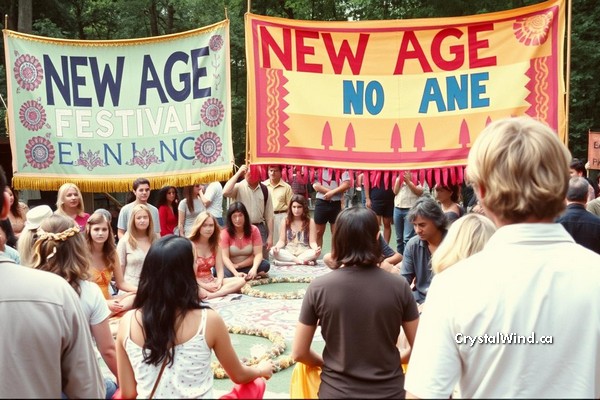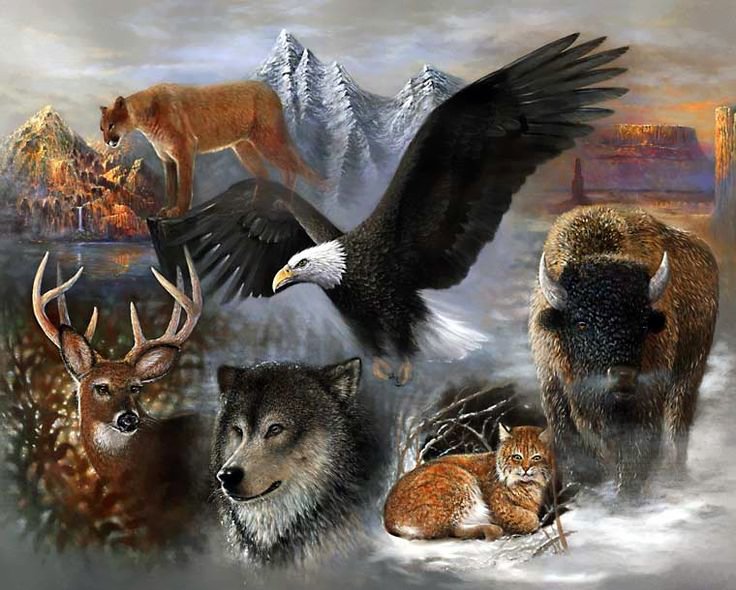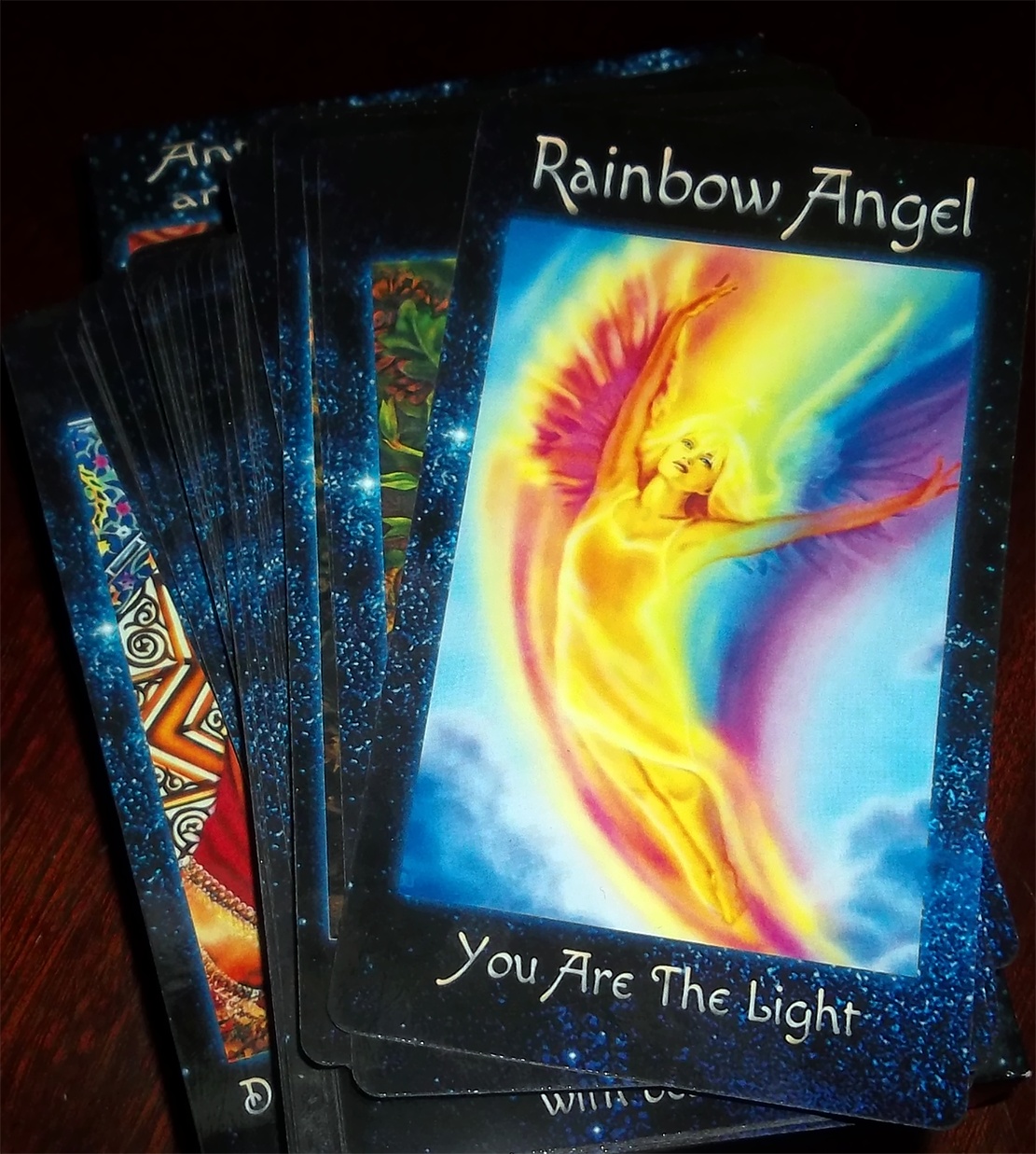New Age Rising With Crystals and Spiritual Vision
- Details
- Written by And-El
- Views: 18537

The Evolution of the New Age Movement: Spiritual Awakening, Crystal Culture, and Barbara Marx Hubbard's Legacy
The New Age movement represents one of the most influential spiritual developments of the past century, evolving from a fringe counterculture phenomenon into a mainstream cultural force. This spiritual current has transformed how millions approach consciousness, healing, and personal growth. From its roots in 1960s counterculture to today's crystal-adorned Instagram feeds, the movement has continuously adapted while maintaining its core belief in human potential and spiritual transformation.
This exploration will guide you through the movement's origins, key figures like Barbara Marx Hubbard, modern trends in crystal healing, and the ongoing debate about whether we're experiencing a genuine spiritual awakening or simply witnessing clever marketing. We'll examine both the profound insights and potential pitfalls of New Age spirituality, offering a balanced perspective on this complex cultural phenomenon.
Origins and Core Beliefs of the New Age Movement
Early gatherings in the 1970s helped establish the foundations of the New Age movement
The New Age movement emerged in the late 1960s and early 1970s, coinciding with the hippie counterculture that rejected conventional social norms. The term "New Age" itself comes from astrology, referring to the transition from the Age of Pisces to the Age of Aquarius-a shift believed to bring humanity into an era of heightened spiritual awareness and harmony.
While lacking a central organization or dogma, the New Age movement is unified by several core beliefs. At its foundation is the concept of monism-the idea that all reality is ultimately one. This perspective sees divinity not as separate from creation but permeating everything. The universe is viewed as an interconnected energy system where humans can tap into higher consciousness through various spiritual practices.
Key Philosophical Foundations
- Universal consciousness that connects all beings
- Personal transformation through spiritual practices
- Holistic approach to health and healing
- Rejection of institutional religion in favor of direct spiritual experience
- Integration of Eastern and Western spiritual traditions
- Belief in human potential for spiritual evolution
The movement draws from diverse sources including Eastern religions, Western occultism, modern psychology, and quantum physics. It embraces practices like meditation, yoga, energy healing, and divination while rejecting the hierarchical structures of traditional religions. Instead, it emphasizes personal experience and intuition as valid paths to spiritual truth.
This eclectic approach has allowed the New Age movement to continuously evolve, incorporating new ideas and practices while maintaining its focus on personal transformation and spiritual awakening. The movement gained significant momentum in the 1980s with popular figures like Shirley MacLaine bringing New Age concepts to mainstream audiences through bestselling books and television appearances.
Barbara Marx Hubbard: Visionary of Conscious Evolution

Among the influential figures who shaped the New Age movement, Barbara Marx Hubbard stands out as a visionary futurist whose concept of "conscious evolution" profoundly impacted New Age thinking. Born in 1929 to a wealthy family, Hubbard's spiritual awakening began after reading Teilhard de Chardin's work on human evolution, leading her to dedicate her life to exploring humanity's potential for conscious transformation.
Unlike many New Age thinkers who focused primarily on individual spiritual growth, Hubbard emphasized collective evolution. She believed humanity stood at an evolutionary crossroads with the capacity to either destroy itself or evolve into a more conscious, cooperative species. This perspective resonated deeply with the New Age movement's optimistic view of human potential.
Hubbard's Key Contributions to New Age Thought
Conscious Evolution
Hubbard developed the concept of conscious evolution-the idea that humans can intentionally direct their own evolutionary development through heightened awareness and spiritual practices. This represented a shift from passive evolution to active participation in humanity's future.
The Birth 2000 Vision
She proposed that humanity was experiencing a collective "birth" into a new stage of development, comparing global crises to birth pangs preceding a new era of consciousness. This metaphor of planetary rebirth became central to many New Age narratives.
Synergistic Convergence
Hubbard emphasized the importance of bringing together diverse fields-science, spirituality, technology, and art-to create new solutions for humanity's challenges. This interdisciplinary approach influenced the New Age movement's holistic perspective.
Evolutionary Spirituality
She integrated spiritual concepts with evolutionary theory, suggesting that spiritual development was the next frontier of human evolution. This perspective helped bridge scientific and spiritual worldviews within the New Age movement.
In 1984, Hubbard ran for the Democratic vice-presidential nomination, using her campaign to promote her evolutionary ideas. Though unsuccessful politically, this effort brought her vision to wider audiences. Her books, including "Conscious Evolution" and "The Evolutionary Journey," became foundational texts for many in the New Age movement.
Hubbard's legacy continues through organizations like the Foundation for Conscious Evolution and the Evolutionary Leaders Circle. Her vision of humanity consciously participating in its own evolution remains a central theme in contemporary New Age thought, influencing everything from integral theory to evolutionary spirituality movements.
The future exists first in imagination, then in will, then in reality. - Barbara Marx Hubbard
The Rise of Crystal Culture in Modern New Age Practices

Among the most visible manifestations of the New Age movement in contemporary culture is the surging popularity of crystal healing. What was once considered a fringe practice has transformed into a billion-dollar industry, with crystals appearing everywhere from luxury wellness spas to mainstream retail chains. The global crystal and gemstone market has experienced remarkable growth, expanding from $3.8 billion in 2019 to a projected $6.5 billion by 2025.
This crystal renaissance represents more than just a commercial trend-it reflects a deeper cultural shift toward alternative forms of spirituality and healing. For many practitioners, crystals serve as tangible access points to the intangible energies central to New Age belief systems.
Understanding Crystal Healing Principles
Crystal healing is based on the premise that crystals and gemstones contain unique vibrational frequencies that can interact with the human energy field. Practitioners believe these stones can help balance chakras (energy centers), clear energetic blockages, and promote physical and emotional healing. Different crystals are associated with specific properties-amethyst for spiritual awareness, rose quartz for love, clear quartz for amplification, and black tourmaline for protection.

Why Crystals Resonate with Younger Generations
Tangible Spirituality
In an increasingly digital world, crystals offer a physical, tactile connection to spiritual practice. They provide a concrete focal point for meditation and intention-setting in an otherwise abstract spiritual landscape.
Aesthetic Appeal
The visual beauty of crystals makes them highly shareable on social media platforms like Instagram and TikTok, where hashtags like #crystalhealing and #crystalcommunity have millions of posts. This visibility has accelerated their mainstream adoption.
Burnout Culture Response
For generations facing unprecedented levels of anxiety, burnout, and disconnection, crystals represent a self-directed approach to wellness outside conventional healthcare systems that many find inadequate for addressing emotional and spiritual needs.
Environmental Connection
Crystals, as natural formations from the earth, appeal to environmentally conscious consumers seeking connection with nature. This aligns with broader interests in sustainability and natural products.
The crystal trend has been amplified by celebrity endorsements from figures like Gwyneth Paltrow, Adele, and Victoria Beckham, who have publicly embraced crystal healing. Meanwhile, social media platforms have democratized access to crystal knowledge, with TikTok creators offering tutorials on crystal grids, cleansing rituals, and chakra balancing to millions of viewers.
However, this popularity has raised concerns about ethical sourcing, with increased demand leading to exploitative mining practices in countries like Madagascar, Brazil, and Myanmar. In response, a growing movement for sustainable and ethically sourced crystals has emerged, with certifications and transparency becoming important selling points for conscious consumers.
Modern Trends Reshaping the New Age Movement

The New Age movement continues to evolve, adapting to technological and cultural shifts while maintaining its core emphasis on spiritual transformation. Today's manifestation of New Age spirituality looks markedly different from its 1970s origins, with several key trends reshaping how people engage with these practices.
Digital Spirituality and Tech Integration
Technology has revolutionized access to spiritual practices once requiring in-person instruction. Meditation apps like Calm and Headspace have introduced mindfulness to millions, while astrology platforms such as Co-Star and The Pattern offer personalized cosmic guidance through sophisticated algorithms. These digital tools have democratized practices previously available only to dedicated seekers with access to specialized teachers.
Virtual reality meditation experiences, AI-powered tarot readings, and wearable technology that tracks biorhythms for optimal meditation times represent the cutting edge of this tech-spirituality fusion. Rather than rejecting technology, many New Age practitioners embrace it as a tool for expanding consciousness.
Sound Healing Renaissance

Sound healing has emerged as one of the fastest-growing sectors within the New Age movement. Sound baths-immersive experiences using singing bowls, gongs, and tuning forks-have become popular offerings at yoga studios, wellness centers, and even corporate retreats. The practice is based on the principle that specific sound frequencies can balance the body's energy and promote healing.
Scientific research on sound therapy has lent credibility to some aspects of these practices, with studies showing potential benefits for reducing stress, improving mood, and decreasing pain perception. This blend of ancient wisdom with contemporary research exemplifies how the New Age movement continues to seek validation through scientific frameworks.
Climate Consciousness and Eco-Spirituality
Environmental concerns have become increasingly central to New Age spirituality, with many practitioners viewing ecological activism as a spiritual imperative. This eco-spiritual turn emphasizes humanity's interconnection with nature and responsibility toward the planet.
Practices like forest bathing (shinrin-yoku), earth-honoring rituals, and ceremonies focused on healing humanity's relationship with nature have gained prominence. Organizations like the Pachamama Alliance blend indigenous wisdom with New Age concepts to address environmental challenges through a spiritual lens.
Psychedelic Renaissance
The resurgence of interest in psychedelics represents another significant trend influencing contemporary New Age spirituality. As research into substances like psilocybin, ayahuasca, and MDMA demonstrates potential therapeutic benefits, many spiritual seekers are integrating these experiences into their practice.
Retreat centers offering ceremonial psychedelic experiences have proliferated, particularly in countries with permissive legal frameworks. These experiences are typically framed as opportunities for profound spiritual insights, emotional healing, and connection with universal consciousness-themes that align closely with New Age philosophy.
How has social media influenced New Age practices?
Social media has dramatically accelerated the spread of New Age concepts while simultaneously transforming how they're practiced. Platforms like Instagram and TikTok have created new spiritual influencers who translate complex esoteric concepts into accessible content. Hashtags like #WitchTok and #SpiritualTikTok have billions of views, introducing young audiences to practices like tarot, energy work, and manifestation techniques.
However, this social media spirituality often emphasizes aesthetic and immediately shareable aspects of practice over deeper philosophical foundations. Critics argue this has led to the "McMindfulness" phenomenon-spiritual practices stripped of their ethical and philosophical contexts for easy consumption.
Examining the Pitfalls of the New Age Movement

Despite its emphasis on personal transformation and spiritual growth, the New Age movement is not without significant criticisms and potential pitfalls. A balanced examination requires acknowledging these challenges alongside the movement's positive contributions.
Cultural Appropriation Concerns
One of the most persistent criticisms of the New Age movement involves its relationship with indigenous spiritual traditions. Practices like smudging with white sage, using Native American medicine wheels, or conducting sweat lodge ceremonies have been adopted by New Age practitioners often without proper understanding of their cultural contexts or permission from the communities of origin.
Indigenous leaders have expressed concern about sacred practices being commercialized, misrepresented, or stripped of their cultural significance. The term "plastic shaman" emerged to describe non-Native individuals who profit from teaching distorted versions of indigenous ceremonies without proper training or cultural authorization.
When spiritual practices are removed from their cultural contexts, something essential is lost. What remains is often a hollow imitation that serves the market rather than the spirit. - Indigenous rights advocate
The Wellness Industrial Complex
The commercialization of New Age spirituality has created what critics call the "wellness industrial complex"-a multibillion-dollar industry selling enlightenment through expensive products and services. This commercialization raises questions about accessibility and authenticity.
Potential Benefits
- Increased visibility and accessibility of spiritual practices
- Financial support for teachers and practitioners
- Innovation and adaptation of traditional practices
- Integration of spiritual concepts into mainstream culture
Concerning Aspects
- Spiritual practices becoming luxury commodities
- Exploitation of vulnerable seekers
- Emphasis on consumption over genuine practice
- Spiritual bypassing of real social issues
When crystals sell for hundreds of dollars and exclusive retreats cost thousands, spiritual growth becomes a privilege rather than a universal possibility. This contradicts the movement's purported values of accessibility and egalitarianism.
Pseudoscience and Misinformation

The New Age movement often makes claims about healing and consciousness that lack scientific validation. While some practices like meditation have substantial research supporting their benefits, others like crystal healing, certain energy therapies, and quantum mysticism make assertions that contradict established scientific understanding.
This blending of scientific terminology with metaphysical concepts can create confusion and potentially lead people to reject evidence-based treatments for serious conditions. The movement's emphasis on personal truth sometimes undermines the value of objective evidence, creating vulnerability to misinformation.
Spiritual Bypassing
Psychologist John Welwood coined the term "spiritual bypassing" to describe using spiritual ideas and practices to avoid dealing with uncomfortable feelings, unresolved wounds, and developmental needs. This phenomenon is particularly prevalent in some New Age circles.
When complex social issues like racism, inequality, or environmental degradation are reduced to matters of personal vibration or karma, it can diminish accountability and discourage meaningful action. Similarly, focusing exclusively on positive thinking may prevent individuals from processing necessary emotions like grief, anger, or fear.
Critical Thinking Reminder: Approaching New Age practices with discernment doesn't mean rejecting them entirely. Rather, it involves asking thoughtful questions about origins, evidence, ethical implications, and potential benefits or harms of specific practices.
Debating the Reality of Spiritual Awakening

Central to the New Age movement is the concept of spiritual awakening-a fundamental shift in consciousness that transforms how individuals perceive themselves and reality. But is humanity truly experiencing a collective spiritual awakening, as many New Age thinkers suggest, or are we witnessing something else entirely?
The Case for Spiritual Awakening
Proponents point to several indicators suggesting a genuine shift in collective consciousness:
- Meditation Mainstreaming: Practices once considered fringe have become widely accepted, with over 35 million Americans reporting regular meditation practice-a threefold increase since 2012.
- Institutional Adoption: Mindfulness programs in schools, corporations, and healthcare settings indicate broader acceptance of contemplative practices.
- Scientific Validation: Growing research on neuroplasticity, meditation effects on the brain, and the health benefits of mindfulness lends credibility to practices once dismissed as purely subjective.
- Environmental Consciousness: Increasing recognition of human interconnection with nature aligns with New Age perspectives on planetary consciousness.
- Interfaith Dialogue: Greater openness to learning from diverse spiritual traditions suggests evolution beyond religious exclusivism.
Barbara Marx Hubbard and other evolutionary spirituality advocates interpret these trends as evidence of humanity's collective evolution toward higher consciousness-a necessary adaptation for addressing global challenges like climate change, inequality, and technological disruption.
The Skeptical Perspective
Critics offer alternative explanations for the apparent spiritual renaissance:
- Commercialization: The popularity of spiritual practices may reflect successful marketing rather than genuine awakening.
- Confirmation Bias: Believers in spiritual awakening may selectively notice evidence supporting their view while overlooking contradictory indicators.
- Psychological Mechanisms: Many spiritual experiences can be explained through well-understood psychological phenomena like suggestion, placebo effects, and group dynamics.
- Cultural Trends: Interest in spirituality may represent a pendulum swing away from materialism rather than an evolutionary leap in consciousness.
- Privilege Factor: The luxury of spiritual seeking may be available primarily to those whose basic needs are already met.
From this perspective, what appears as awakening might better be understood as cultural adaptation to contemporary challenges, with spiritual frameworks providing meaning and coping mechanisms in uncertain times.
The Middle Path: Integrating Perspectives

A more nuanced view acknowledges both the genuine transformative potential of spiritual practices and the legitimate concerns about uncritical acceptance of all New Age claims. This integrative perspective recognizes that:
Scientific Validation Matters
Practices like meditation, compassion cultivation, and nature connection show measurable benefits in research studies. These evidence-based approaches can be embraced without accepting all New Age claims.
Subjective Experience Has Value
While objective evidence is important, the subjective dimensions of human experience-meaning, purpose, connection-remain essential aspects of wellbeing that scientific materialism alone may not fully address.
Critical Thinking Enhances Spirituality
Thoughtful discernment strengthens rather than diminishes authentic spiritual inquiry. Questioning claims and examining evidence can protect seekers from exploitation while deepening genuine understanding.
Cultural Context Matters
Acknowledging the cultural origins of spiritual practices and approaching them with respect and proper attribution enriches rather than limits their transformative potential.
This balanced approach suggests that whether or not humanity is experiencing a literal evolutionary leap in consciousness, the growing interest in practices that cultivate awareness, compassion, and connection represents a valuable cultural development with potential benefits for individuals and society.
The question isn't whether we're experiencing a predestined spiritual awakening, but rather how we might intentionally cultivate the qualities of awareness, compassion, and wisdom that enhance human flourishing. - Contemporary contemplative teacher
The Future of the New Age Movement

As the New Age movement continues to evolve, several emerging trends suggest possible directions for its future development. While prediction is always uncertain, current patterns indicate several potential trajectories for this influential spiritual current.
Integration with Technology
The relationship between spirituality and technology is likely to deepen, with several developments on the horizon:
- Neurotech Meditation: Advanced EEG headsets and neurofeedback devices may offer increasingly precise guidance for meditation, potentially making states once accessible only to experienced practitioners available to beginners.
- Virtual Reality Spiritual Experiences: Immersive VR environments for spiritual practice could simulate sacred sites, facilitate guided journeys, or create entirely new contemplative spaces impossible in physical reality.
- AI Spiritual Assistants: Artificial intelligence may evolve to provide personalized spiritual guidance, synthesizing wisdom from diverse traditions while adapting to individual needs and questions.
- Blockchain for Ethical Sourcing: Distributed ledger technologies could address concerns about ethical sourcing of crystals and other spiritual products by creating transparent supply chains.
These technological developments may transform how spiritual practices are taught, experienced, and integrated into daily life, potentially making them more accessible while raising new questions about authenticity and embodiment.
Scientific Validation and Integration
The dialogue between spiritual practices and scientific research is likely to continue, with several potential developments:
Evidence-Based Spirituality
As research on meditation, psychedelics, and other consciousness practices advances, we may see greater differentiation between practices with substantial evidence and those lacking empirical support.
Consciousness Studies
Scientific exploration of consciousness may provide new frameworks for understanding spiritual experiences, potentially validating some aspects of New Age perspectives while refining others.
Integrative Healthcare
The integration of evidence-based spiritual practices into healthcare may accelerate, with modalities like mindfulness and compassion training becoming standard components of treatment for various conditions.
Psychedelic Medicine
As research on therapeutic applications of psychedelics advances, these substances may become important tools for addressing mental health challenges while often catalyzing experiences described as spiritual.
Social and Environmental Engagement

The future of the New Age movement may include greater emphasis on applying spiritual insights to collective challenges:
- Spiritual Environmentalism: Earth-centered spirituality may increasingly translate into concrete environmental activism, with spiritual communities becoming important voices in climate action.
- Social Justice Integration: Growing recognition of how spiritual bypassing can undermine social change may lead to more sophisticated integration of contemplative practice with justice work.
- Regenerative Communities: Intentional communities based on New Age principles may evolve to address practical challenges of sustainable living while serving as laboratories for social innovation.
- Indigenous Collaboration: More respectful, reciprocal relationships between New Age practitioners and indigenous traditions could emerge, with proper attribution, compensation, and partnership replacing appropriation.
Fragmentation and Specialization
Rather than evolving as a unified movement, New Age spirituality may continue to fragment into increasingly specialized niches:
- Evidence-Based Contemplative Practice: Communities focused on scientifically-validated meditation and mindfulness, largely divorced from metaphysical claims.
- Tech-Enhanced Consciousness Exploration: Groups utilizing technology for consciousness exploration, from biofeedback to brain stimulation.
- Traditional Wisdom Preservation: Communities dedicated to authentic preservation and transmission of specific wisdom traditions with proper lineage and attribution.
- Psychedelic Spirituality: Communities centered around ceremonial use of consciousness-altering substances within legal frameworks.
- Artistic and Creative Spirituality: Approaches emphasizing creative expression as spiritual practice, from movement to music to visual arts.
This specialization may allow for greater depth and integrity within each approach while potentially losing the integrative vision that characterized earlier New Age thought.
Participatory Future: Perhaps the most important aspect of the New Age movement's future is that it remains to be created by those who participate in it. Rather than a predetermined evolution, the movement will be shaped by the choices, practices, and communities that current and future seekers create.
Conclusion: Navigating the New Age Landscape

The New Age movement represents one of the most significant spiritual developments of our time-a diverse, evolving current that has transformed how millions approach consciousness, healing, and personal growth. From its countercultural roots to today's crystal-adorned Instagram feeds, the movement continues to adapt while maintaining its core belief in human potential and spiritual transformation.
Barbara Marx Hubbard's vision of conscious evolution, the explosive popularity of crystal healing, and ongoing debates about spiritual awakening all reflect the movement's vitality and continued relevance. As we've explored, the New Age landscape contains both profound insights and potential pitfalls, offering transformative possibilities alongside risks of commercialization, cultural appropriation, and uncritical thinking.
The most fruitful engagement with New Age spirituality may involve neither wholesale acceptance nor dismissal, but rather a discerning approach that:
- Appreciates the value of practices that foster awareness, compassion, and connection
- Maintains critical thinking about claims and their evidence
- Respects the cultural origins of spiritual traditions
- Recognizes both individual transformation and collective responsibility
- Integrates subjective experience with objective knowledge
Whether the New Age movement represents the dawning of a new era of consciousness or simply a cultural response to contemporary challenges, its emphasis on human potential and spiritual growth continues to resonate with millions seeking meaning in an increasingly complex world.
As the movement evolves through integration with technology, scientific validation, social engagement, and specialization, it will continue to be shaped by those who participate in it-offering each new generation the opportunity to reimagine what spiritual awakening might mean for themselves and for our shared future.
Share Your Thoughts
If you found these ideas intriguing, please share this article with others who might benefit from a fresh view of spirituality. Your comments and thoughts are also welcome—let’s continue the conversation and explore these possibilities together.
Source: crystalwind.ca
And-El, a seer of unseen realms, weaves 30+ years of mystic insight with the pulse of starlit innovation. From CrystalWind.ca’s 2008 dawn, he channels ethereal winds, crafting the 58-card Crystal Wind Oracle Myth & Magic Deck to guide souls. Whispered to by Archangels, his gifts spark awakening. Join the journey at CrystalWind.ca #LightWarrior #SpiritualJourney #Awakening.
© 2025 CrystalWind.ca | All Images By CrystalWind.ca. All Rights Reserved | Unauthorized use prohibited | Permissions | #CrystalWind
Liked this article? Dive deeper into personal growth and wellness! Check out CrystalWind.ca for spiritual wisdom or explore AromaWorx.ca for natural well-being tips. Spread the positivity—share this with friends on their happiness journey!
Let’s Chat! Drop Your Thoughts Below! ![]()
Latest Articles
Dive into the Mystical World of the Crystal Wind Oracle Deck!
Get All the Enchanting Details Now!
NEW Expanded Boxed Edition!
Now with 58 Cards for Richer Wisdom!

Imagine a world of inspiration and healing, free for all—made possible by YOU!
Donate Now—Ignite the Magic at CrystalWind.ca!

Epilepsy - Finding A Cure
Your donation can make a difference!
Help us find a cure – donate now!
Unlock Your Light: Join Lightworkers Worldwide on CrystalWind.ca!
Follow Us!
Featured This Month
Mabon in Modern Times: Fresh Takes on the Au…
The Mabon season begins somewhere around the 21st-22nd of September and cont... Read more
Mabon Magic: Ideas For Fall Decoration And R…
Welcome (almost!) to Fall! We’re turning the Great Wheel once again, toward ... Read more
The Vine: September 2nd - September 29th
The Autumnal Equinox ( Alban Elfed ) Celtic Symbol : The White Swan Read more
Virgo Mythology
The Virgo Myth In all of constellation mythology, few legends are as misund... Read more
Peridot: The Healer's Stone
Peridot has been used as a Power Stone for centuries. Peridot fosters emotio... Read more
Crystals for Virgo
During harvest time, when the seasons begin to transition from summer to fall,... Read more
Sun in Virgo
An Overview of Sun Sign Characteristics for Virgo The ruler of Virgo is Mer... Read more
Watermelon Tourmaline
Synonym: Rainbow Tourmaline The watermelon tourmaline is a rare variety t... Read more














































